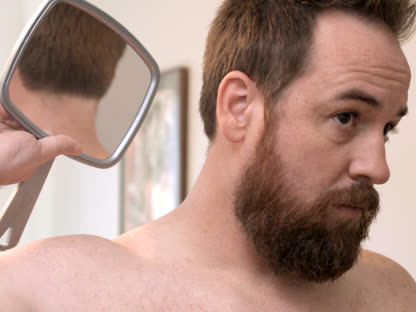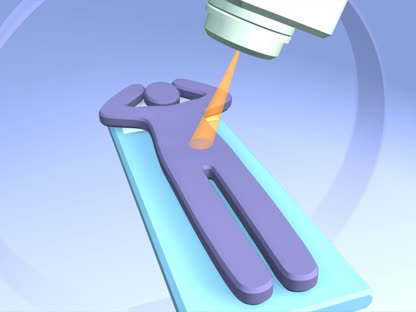Basal Cell Skin Cancer
Condition Basics
What is basal cell skin cancer?
Basal cell skin cancer is the most common type of skin cancer. It grows slowly and usually doesn't spread (metastasize) to other parts of the body. But if this cancer isn't treated, it can damage the nearby skin and deeper tissues. When it's found and treated early, it is almost always cured.
What are the symptoms?
Skin cancer usually appears as a growth that changes in color, shape, or size. This can be a sore that doesn't heal or a change in a mole or skin growth. Basal cell skin cancer usually occurs on the face, head, or trunk of the body.
How is it diagnosed?
Your doctor will ask about your past health and do a physical exam. This will include taking a close look at the skin growth. The doctor may take a sample (biopsy) of the growth to test in a lab. A biopsy can confirm whether the cells are cancer.
How is basal cell skin cancer treated?
Your doctor will want to remove all of the cancer. The most common way is surgery to cut out the abnormal growth. Radiation may be done if surgery isn't an option. Other treatments include medicines that are put on the skin (topical therapies) and photodynamic therapy. After treatment, you will need regular checkups.
Health Tools
Health Tools help you make wise health decisions or take action to improve your health.
Lowering Your Risk
- Always wear a wide-brimmed hat and long sleeves and pants when you are outdoors.
- Avoid the sun between 10 a.m. and 4 p.m., which is the peak time for UV rays. If outdoors, seek the shade.
- Always wear sunscreen on exposed skin. This is important for people of all skin colors. Make sure to use a broad-spectrum sunscreen that has a sun protection factor (SPF) of 30 or higher. Use it every day, even when it is cloudy.
- Use lip balm or cream that has SPF to protect your lips from getting sunburned.
- Wear sunglasses that block UV rays.
- Do not use tanning booths or sunlamps.
Learn more
Watch
Symptoms
Basal cell skin cancer usually affects the face, head, and trunk of the body. The nose is the most common site.
Signs of basal cell skin cancer include:
- Any firm, pearly bump with tiny blood vessels that look spidery (telangiectasias).
- Any red, tender, flat spot that bleeds easily.
- Any small, fleshy bump with a smooth, pearly appearance, often with a lower area in the center.
- Any bump that can be darker than the rest of your skin. This is more common in people with darker skin.
- Any smooth, shiny bump that may look like a mole or cyst.
- Any patch of skin, especially on the face, that looks like a scar and is firm to the touch.
- Any bump or sore that itches, bleeds, crusts over, and then repeats the cycle and has not healed in a few weeks.
- Any change in the size, shape, or color of a mole or a skin growth.
What Happens
Basal cell skin cancer usually develops slowly. Because of this slow growth, it can often be detected and treated early, increasing the chance for a cure.
If basal cell skin cancer isn't treated, it can damage the skin and deeper tissues where it started, including muscle and bone. But this cancer very rarely spreads (metastasizes) to other parts of the body.
After you have one basal cell skin cancer, you are more likely to have another one develop in a new place.
Learn more
When to Call a Doctor
Watch closely for changes in your health, and be sure to contact your doctor if:
- You see a change in your skin, such as a spot, growth or mole that:
- Grows bigger. This may happen slowly.
- Changes color.
- Changes shape.
- Starts to bleed easily or crusts.
- You have a wound that does not heal.
Treatment Overview
Your doctor will want to remove all of the cancer. There are several ways to remove it. It depends on how big it is, where it is on your body, and your age and overall health. Options include:
- Surgery. The doctor numbs the skin and cuts out the cancer. This almost always cures the cancer.
- Mohs micrographic surgery. The doctor removes the skin cancer one layer at a time, checking each layer for cancer cells right after it is removed.
- Curettage and electrosurgery. Curettage uses a spoon-shaped tool (curette) to scrape off the skin cancer. Electrosurgery controls the bleeding.
- Topical therapy. Medicine is applied to the skin.
- Cryosurgery. This destroys the cancer by freezing it.
- Photodynamic therapy. This uses a medicine that is activated with light.
Radiation therapy may be done if surgery isn't an option. Treatment for advanced cases may include targeted therapy, immunotherapy, and chemotherapy.
After treatment, you'll need regular checkups.
Learn more
Watch
Self-Care
Protect your skin from ultraviolet (UV) rays. For example, stay out of the sun during midday hours, use a broad-spectrum sunscreen, and wear protective clothing. Get skin exams as advised by your doctor and check all of your own skin for changes. Avoid medicines that can make your skin more sensitive to UV rays.
Learn more
Watch
Credits
Current as of: October 25, 2024
Author: Ignite Healthwise, LLC Staff
Clinical Review Board
All Ignite Healthwise, LLC education is reviewed by a team that includes physicians, nurses, advanced practitioners, registered dieticians, and other healthcare professionals.
Current as of: October 25, 2024
Author: Ignite Healthwise, LLC Staff
Clinical Review Board
All Ignite Healthwise, LLC education is reviewed by a team that includes physicians, nurses, advanced practitioners, registered dieticians, and other healthcare professionals.







